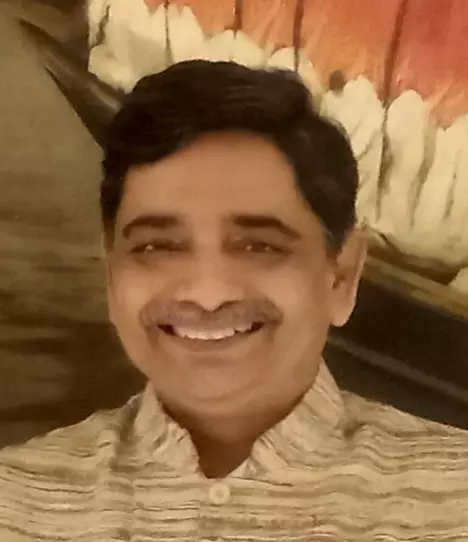Façade of feminism
The fast-increasing cases of brutality against women despite certain upgradations in the laws expose the misogynistic approach of the government

In 2015, the Delhi police launched an app named ‘Himmat’ on which a woman could register to call or message the police in an emergency. The police would know her location and rush to her help. Very few women registered, as they found the app both deaf and dumb. The police upgraded and rechristened the app as ‘Himmat Plus’, but even that failed to coax women to register in a large number.
Are women more secure since Delhi and the rest of the country erupted in popular rage over the predation of Nirbhaya 10 years ago? Taking just Delhi as an example, in 2012, the year of her brutalisation, 706 women were raped. In 2022, two years after four of her predators were hanged, 1,969 women were raped. Does this sound like women in Delhi are more secure? Or that the Delhi police’s long list of measures to protect women post Nirbhaya is nothing but a necklace studded with faux gems? Women are being dragged under wheels for kilometres, and the head of the women's safety council got close to an encounter of a similar type. Where is the so-called protection?
Surely, the Delhi police has changed organisationally post-Nirbhaya. It now has a Special Police Unit for Women and Children housed in a separate building. It has crime against women (CAW) cells in police stations.
One of the major reasons for the continuous spike in crimes against women not only in Delhi but also in the rest of the country is the lack of honest professionalism in the police. In the first place, the head is a political appointee. Neither the central government nor the state governments have agreed to let the appointment of the director general of police be handled by autonomous organisations such as public service commissions, despite Supreme Court orders. Even the JS Verma committee set up after Nirbhaya strongly recommended non-partisan selection of the head of police.
There is a women’s help desk at every police station. It has a special women's helpline and an anti-stalking helpline. These organisational changes might have made it a little easier for women to get access to the police for help, but they have not proved effective in reducing crimes against them. Crimes against women in Delhi rose from 10,093 cases in 2021 to 14,277 cases in 2022, a spike of 41%.
A handpicked police chief is a robot whose remote lies on the desk of the home minister. We saw what happened at Boolgarhi village, Hathras district, UP in September 2020. A 19-year-old Dalit girl, who went out to the fields to collect grass for feeding cattle, was grabbed and gang-raped by four upper-caste men. The police first refused to register an FIR. She died in a Delhi hospital a fortnight later. The police cremated her body without her family’s presence or consent.
Two years later, the Uttarakhand police cremated the body of a 19-year-old girl allegedly murdered by a BJP leader’s son, who owned a resort, without her family’s presence. The police demolished the resort where the accused was allegedly ‘supplying’ women to his ‘VIP’ guests and asked the girl, who was his receptionist, to be one of them, thus destroying vital evidence. The police, in the Hathras case, did not even follow the elementary law of registering an FIR. They did not arrest the accused for interrogation, even though the wounded victim was battling for her life in a hospital. In the Uttarakhand case, the police took up the case four days after the young woman’s body was found, four vital days in which the accused had enough time to destroy evidence. The police then demolished the resort, where events preceding the victim’s death took place, destroying more evidence.
Post Nirbhaya, some laws relating to crimes against women were changed. A man could serve three to five years imprisonment for stalking (IPC section 354D) a woman. The law on rape (IPC section 375) was amended to include not just penetration of the penis but also of any object, or a part of the body, into the vagina, mouth, urethra or anus of a woman. Violators could even face capital punishment, as did the savages who brutalised Nirbhaya. Rape cases were to be heard in fast-track courts.
Despite these amendments, crimes against women are rising not only in Delhi but all over the country. Why? Because the amendments were aimed to serve as water cannons to extinguish the conflagration of public anger sparked by the brutalisation of Nirbhaya and not to serve as ultimate weapons to punish and deter savages. Much like the old laws, the new laws remain on statute books. They are like sheathed swords hanging on the walls of the police house as decorations. How will the predators stop preying upon women unless the police march through the town with unsheathed swords in hand?
We have the Bilkis Bano case. How could remissions be granted to the 11 accused who gang-raped her? On one hand, the Indian State makes lethal laws to punish rapists, and on the other, it passes orders to forgive them. What does the gross contradiction show? That the State, while broadcasting its commitment to making life safer for women, works to make life safer for predators. The State is feminist in theory and misogynist in practice.
Let the women of India be warned that the fight for the elimination of violence against them is going to be very very long. Because the State—the coalition of politicians and policemen—goes for where political and personal profit is, not where social profit is. The monsters need not be a politician’s relatives, as in the Uttarakhand case. They could be ordinary men like the rapists of Bilkis Bano, who could influence the vote. They could be from the upper caste that votes for you, as in Hathras.
In a system where policemen are not independent and professional, the tormentors and attackers of women can easily find a protector in a politician—a sarpanch, a mayor, an MLA, an MP, a minister— who can influence the course of the investigation and make the case weak. They are also helped by the social environment. After all, India remains a man’s world. Men find sympathy and support among men everywhere—in the family, society, workplace, medical profession, political parties, police, you name the place.
Views expressed are personal




